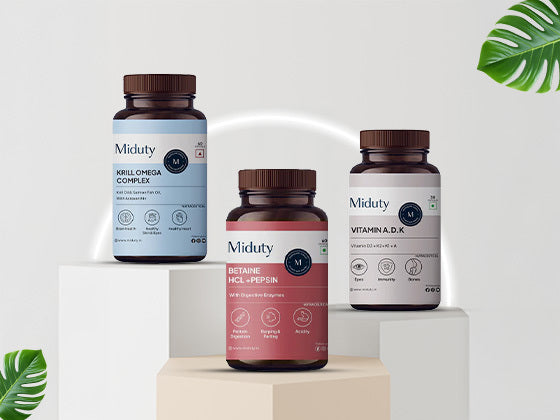Octinoxate, also known as ethylhexyl methoxycinnamate, is a common organic compound used as a chemical UV filter in sunscreens and other personal care products. It functions by absorbing UVB radiation, and other UV filters are frequently combined with it to offer broad-spectrum defence against UVB and UVA rays. Although octinoxate effectively shields the skin from UV damage, safety issues have been raised. According to certain research, octinoxate may interfere with hormone production and perhaps cause endocrine disruption. The data on humans are scarce, and the investigations have primarily been carried out on animals, therefore, the evidence is conflicting. The FDA and the European Union have both approved the use of octinoxate in sunscreens up to a 7.5% concentration each. Additionally, an independent expert panel known as the Cosmetic Ingredient Review (CIR) examined the safety of octinoxate and came to the conclusion that it is safe to use in cosmetics at concentrations up to 10%.
Understanding Octinoxate and Its Role in Sunscreens
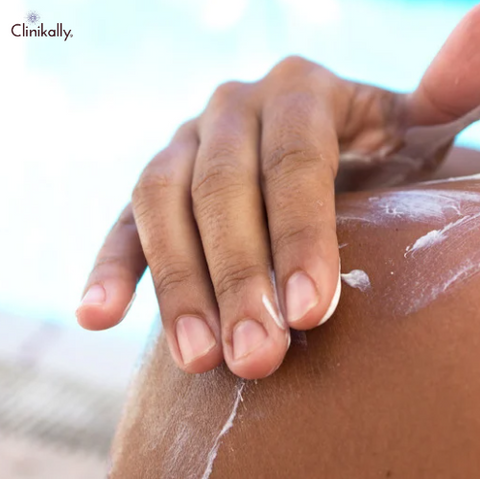
Octinoxate, also known as octyl methoxycinnamate, is a chemical UV filter commonly used in sunscreens to protect against UVB radiation. It functions by absorbing UVB rays, which can lead to sunburn and help promote skin cancer. Octinoxate is a lipophilic substance, which means it may penetrate the skin and is oil-soluble. This property enables it to offer efficient UVB radiation protection, but it also raises questions regarding its safety and the possibility of skin irritation. In addition to sunscreens, octinoxate is a UV-blocking ingredient used in many other personal care products, such as moisturisers, lip balms, and hair care items.
While octinoxate is efficient in blocking UVB rays, UVA radiation is less well-protected by the chemical. Use a sunscreen that offers broad-spectrum protection against UVA and UVB radiation because UVA radiation can also cause skin damage and raise your risk of developing skin cancer. It's crucial to take into account any potential safety issues when selecting an octinoxate-containing sunscreen, especially for people with sensitive skin or a history of allergic reactions. Customers could prefer sunscreens that employ alternative UV filters since they are thought to be safer and offer broad-spectrum defence against both UVA and UVB radiation.
Octinoxate: An Introduction
As a UV filter, octinoxate, sometimes called octyl methoxycinnamate, is a chemical substance frequently found in sunscreens and other personal care products. UVB radiation, which can lead to sunburn and help develop skin cancer, is absorbed by it. Octinoxate is a lipophilic substance, which means it may penetrate the skin and is oil-soluble. This makes it possible for it to offer efficient UVB radiation protection, but it also raises questions regarding its safety and the possibility of skin irritation. According to certain research, octinoxate may have endocrine-disrupting effects, which means it may affect how the body produces hormones.
Concerns have also been raised concerning its effects on the environment, particularly with regard to coral reef toxicity. While octinoxate is efficient at blocking UVB rays, it is less effective at blocking UVA rays, which can potentially cause skin damage and raise the risk of developing skin cancer. Customers may wish to think about utilising sunscreens with different UV filters, which are thought to be safer and offer broad-spectrum defence against both UVA and UVB rays.
UVB Protection and Octinoxate Mechanism
UVB radiation is a form of ultraviolet light that can damage the skin, resulting in sunburns, and promoting the growth of skin cancer. In order to defend against UVB radiation's damaging effects, octinoxate acts by absorbing it before it can reach the skin. A chemical filter called octinoxate works by absorbing UVB rays and transforming them into less damaging energy. This is accomplished by absorbing UVB light, which is subsequently released as heat. This procedure aids in stopping UVB rays from damaging the skin by preventing penetration.
Because octinoxate is a lipophilic molecule, which means it is oil-soluble and may permeate the skin, it is good at blocking UVB light. This quality enables it to offer durable protection against UVB rays, even when exposed to moisture or perspiration. It's crucial to remember that UVA radiation, which can potentially cause skin damage and increase the risk of skin cancer, is not shielded by octinoxate. This is why it's crucial to use a broad-spectrum sunscreen that shields the skin from UVA and UVB rays.
Assessing the Safety of Octinoxate in Sunscreen Products
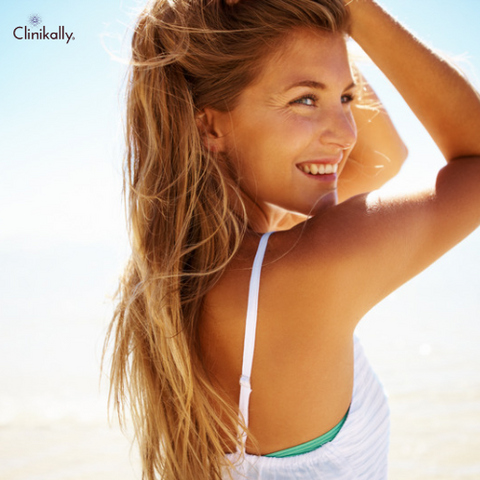
Like many other compounds in sunscreen, the safety of octinoxate has been a point of contention among researchers and regulatory bodies. Octinoxate's propensity for causing skin irritation is one of its drawbacks, especially for people with sensitive skin or a history of allergic reactions. However, most users of sunscreens containing octinoxate don't encounter any negative side effects. Another issue is that octinoxate can have endocrine-disrupting effects, which means it might affect how the body produces hormones. Octinoxate may affect the endocrine system and mimic the effects of oestrogen, according to some research, which could have a variety of negative health impacts.
However, numerous additional investigations have not discovered any proof that octinoxate has any endocrine-disrupting effects. In truth, octinoxate is safe to use in sunscreens in doses up to 7.5%, according to regulatory bodies like the FDA and the European Commission. The effects of octinoxate on the environment are also a cause for worry, particularly its toxicity to coral reefs. According to studies, octinoxate can cause coral bleaching, which can cause coral reefs to die. In an effort to safeguard coral reefs, certain governments have outlawed the inclusion of octinoxate in sunscreens.
FDA Regulations and Octinoxate Safety
In the United States, sunscreens and the substances in them are governed by the Food and Drug Administration (FDA). The FDA published a final rule in 2019 regarding the efficacy and safety of sunscreen chemicals, including octinoxate. The FDA has approved octinoxate for use in sunscreens at dosages up to 7.5% and determined it to be both safe and effective. But in order to evaluate the likelihood of endocrine disruption caused by octinoxate and other sunscreen chemicals, the FDA has also mandated further safety studies.
The FDA has also suggested new guidelines for sunscreens, one of which would set an octinoxate maximum content of 2.2%. The proposed restriction is based on recent scientific findings regarding the possible hazards of octinoxate and other compounds in sunscreen to the environment and human health. The use of octinoxate in sunscreens is governed by state laws in addition to FDA guidelines. Octinoxate and oxybenzone, two more sunscreen ingredients that are thought to be bad for coral reefs, have been outlawed in Hawaii and Key West, Florida, respectively. Consumers should always read the labels on their sunscreens to ensure that they are using safe and effective products, and if they have any concerns, they should consult with a healthcare provider or dermatologist.
Endocrine Disruption Concerns
The term "endocrine disruption" describes how certain chemicals interfere with the endocrine system's regular operation, which controls hormone levels and a variety of physiological functions in the body. According to certain research, octinoxate may mimic the effects of oestrogen and upset the body's hormonal balance, making it a possible endocrine disruptor. Endocrine disruption is a problem since it could result in a variety of health issues, such as issues with thyroid function and some types of cancer. The precise effects of endocrine-disrupting substances like octinoxate on human health, however, are still being researched, and the evidence that is now available is not yet conclusive.
While some studies have hypothesised that octinoxate may cause endocrine disruption, other investigations have found no proof of this. For instance, a review of the scientific literature on octinoxate published in 2019 found that it is unlikely to have a major impact on endocrine function in humans. Regulatory organisations, including the FDA and the European Commission, have determined that octinoxate is acceptable for use in sunscreens at concentrations up to 7.5%, despite the ongoing controversy about the safety of octinoxate and other sunscreen components. To evaluate the likelihood of endocrine disruption caused by octinoxate and other sunscreen chemicals, the FDA has also mandated additional safety studies.
Environmental Impact of Octinoxate and Reef-Safe Sunscreens
It has been demonstrated that octinoxate and other chemical sunscreen chemicals may be harmful to the environment, particularly coral reefs. The loss of color and vitality caused by coral bleaching, which happens when corals expel the algae that live inside their tissues, has been linked to studies on the effects of octinoxate. Octinoxate can also harm coral growth and development and increase their susceptibility to disease. Some regions have put restrictions on sunscreens that contain octinoxate and other chemical sunscreen components in place to allay these worries. For instance, the sales and distribution of sunscreens containing octinoxate and oxybenzone, another component thought to be bad for coral reefs, have been outlawed in Hawaii and Key West, Florida.
Similar restrictions have been put in place in other places as well, including the Republic of Palau and the U.S. Virgin Islands. Many businesses have created reef-safe sunscreens using other, mineral-based chemicals like zinc oxide and titanium dioxide in response to these worries. These substances do not have the possible environmental effects of chemical sunscreen components like octinoxate and are thought to be safe for coral reefs and other marine life. For sunscreens that have less of an impact on the environment, consumers can look for the words "reef-safe" or "ocean-safe" on the label. The loss of coral reefs is exacerbated by other causes like water pollution and climate change, so it's crucial to remember to use sunscreen responsibly—even if it's reef-safe.
The Effects of Octinoxate on Coral Reefs
Octinoxate has been shown to be harmful to coral reefs. According to studies, octinoxate can cause coral bleaching, which is the process by which coral expel the algae that live inside their tissues, resulting in a loss of colour and vitality. Additionally, octinoxate can harm corals DNA, hinder growth and development, and increase their susceptibility to disease. The fact that octinoxate and other chemical sunscreen chemicals can infiltrate marine ecosystems through wastewater and runoff from beaches and other places where sunscreen is applied is one of the reasons why these substances are thought to be bad for coral reefs. These substances can accumulate in coral tissues after entering the water and cause hazardous effects.
Some regions have banned the use of octinoxate and other chemical sunscreen chemicals due to their negative impact on coral reefs. For instance, the sale and distribution of sunscreens containing octinoxate and other hazardous substances are prohibited in Hawaii and Key West, Florida. Similar restrictions have been put in place in other places as well, including the Republic of Palau and the U.S. Virgin Islands. Customers can choose to use reef-safe or mineral-based sunscreens that don't include dangerous compounds like octinoxate to help protect coral reefs and other marine ecosystems. It's also crucial to dispose of sunscreen containers correctly and to avoid applying sunscreen in places where it can end up in the water, including close to coral reefs or other delicate marine habitats.
Choosing Eco-Friendly Sunscreen Options
There are a few key features to look for when selecting an eco-friendly sunscreen:
-
Mineral sunscreens: Look for sunscreens that contain mineral-based ingredients such as zinc oxide and titanium dioxide rather than chemical ingredients such as octinoxate. These mineral-based sunscreens are thought to be safe for coral reefs and other marine life, and they do not have the potential environmental consequences of chemical sunscreen ingredients.
-
Reef-safe certification: Look for sunscreens with the words "reef-safe" or "ocean-safe" on the label. These products have been certified as environmentally safe and are made with ingredients that are less likely to harm coral reefs and other marine ecosystems.
-
Biodegradable packaging: Look for sunscreens that are packaged in biodegradable or recyclable materials. This can help reduce the environmental impact of sunscreen and ensure that the packaging does not contribute to pollution in the ocean or on land.
-
Avoid aerosol sprays: Aerosol sprays can release harmful chemicals into the air and make applying sunscreen evenly difficult. Instead, use a lotion or cream-based sunscreen.
-
Examine the ingredients: Even if a sunscreen is labelled "reef-safe," it is still necessary to check the ingredients to ensure that no harmful chemicals are present. Look for products that do not contain oxybenzone, octinoxate, or other chemicals linked to coral reef damage and environmental harm.
We can contribute to the preservation of our planet and the delicate ecosystems that depend on thriving reefs and oceans by selecting eco-friendly sunscreen options.
Alternatives to Octinoxate in Sunscreen Formulations
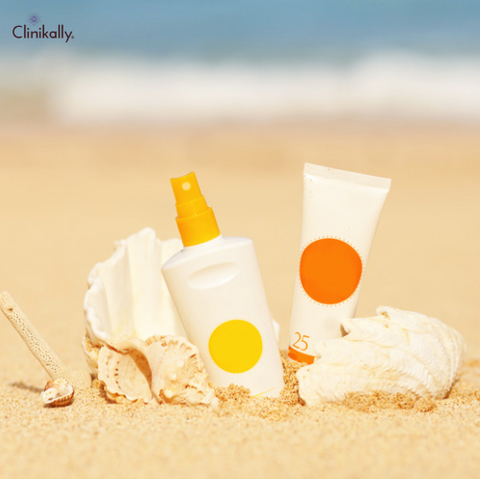
In sunscreen formulations, octinoxate can be replaced by a number of different sunscreen ingredients. These alternatives include, among others:
-
Zinc oxide: A mineral-based component that offers broad-spectrum defence against UVA and UVB rays is zinc oxide. It is a typical ingredient in sunscreens that are considered safe for coral reefs and other marine life.
-
Titanium dioxide: Similar to zinc oxide, titanium dioxide is a mineral-based ingredient that offers both UVA and UVB radiation protection. It is also thought to be safe for coral reefs and other marine life.
-
Mexoryl SX: Research has shown that the chemical sunscreen ingredient Mexoryl SX (ecamsule) is safe for human health and the environment. It offers broad-spectrum UVA protection and is frequently combined with other sunscreen active ingredients.
-
Tinosorb S and M: Tinosorb S and M are chemical sunscreen additives that offer both UVA and UVB radiation protection. They are frequently found in sunscreens in Europe and are thought to be safe for both human health and the environment.
-
Avobenzone: A substance included in sunscreens called avobenzone offers UVA protection. It is frequently used in conjunction with other compounds in sunscreen because it has been proven to be safe for human health.
When looking for an octinoxate replacement in sunscreen formulas, it's critical to choose chemicals that have undergone safety and efficacy testing. Additionally, reducing the environmental impact of sunscreen can be accomplished by selecting products with mineral bases or reef-safe formulations.
Mineral Sunscreen Ingredients: Zinc Oxide and Titanium Dioxide
Mineral sunscreen components like zinc oxide and titanium dioxide are frequently included in sunscreen formulations. Instead of physically absorbing UV rays as chemical sunscreen components do, these substances function by physically preventing and scattering them. For further details on each of these substances, see:
-
Zinc oxide: A mineral-based component that offers broad-spectrum defence against UVA and UVB rays is zinc oxide. It is a typical ingredient in sunscreens that are considered safe for coral reefs and other marine life. In comparison to some chemical sunscreen ingredients, zinc oxide is also gentler on the skin and less likely to irritate the skin. Because of its gentle nature, zinc oxide is frequently used in sunscreens marketed for infants and kids.
-
Titanium dioxide: Similar to zinc oxide, titanium dioxide is a mineral-based ingredient that offers both UVA and UVB radiation protection. It is also thought to be harmless to coral reefs and other marine life. Titanium dioxide is generally considered safe for use on the skin and is less likely to cause irritation or allergic reactions than some chemical sunscreen ingredients. However, some people are concerned about the possibility of titanium dioxide nanoparticles being absorbed through the skin, though research into this is ongoing.
It's vital to keep in mind that sunscreens containing mineral-based chemicals, such as zinc oxide or titanium dioxide, may leave a white cast on the skin as a result of their physical blocking action. However, some more recent mineral-based sunscreen formulas have been created that reduce this impact, and some even have a tint or color that more effectively matches skin tones. For best protection, it's also crucial to pick a sunscreen with a high enough SPF rating and to reapply often.
Balancing Safety, Efficacy, and Environmental Considerations
When choosing a sunscreen, it's critical to strike a balance between safety, efficacy, and environmental concerns. You can use the following advice to make an informed choice:
-
Choose a sunscreen with a high SPF rating: Choose a sunscreen that has an SPF of at least 30. This will offer sufficient defence against UVA and UVB rays.
-
Consider your skin type: Select a sunscreen that is suitable for your skin type. If you have oily skin, look for a lightweight, oil-free formula. Look for a moisturising formula that will hydrate your skin if you have dry skin.
-
Seek out sunscreens with mineral-based ingredients: Zinc oxide and titanium dioxide are examples of such ingredients. They offer efficient sun protection without endangering coral reefs or other marine life. They also have a lower potential for triggering allergic reactions or skin rashes.
-
Avoid oxybenzone and octinoxate: These chemical sunscreen ingredients have been linked to environmental damage and may be harmful to marine life.
-
Look for the following additional ingredients: Some sunscreens contain antioxidants or other beneficial ingredients that can aid in the protection of your skin from free radicals and environmental stressors.
-
Examine the label: Look for a sunscreen that is labelled "broad-spectrum," which means it offers UVA and UVB protection. Also, if you plan to be in the water or sweat a lot, make sure the sunscreen is water-resistant.
-
Reapply sunscreen frequently: Sunscreen should be reapplied every two hours, or more frequently if you are swimming or sweating.
By taking these factors into account, you can select a sunscreen that is both safe and effective for your skin while also being environmentally responsible.
Making Informed Decisions About Sunscreen Selection
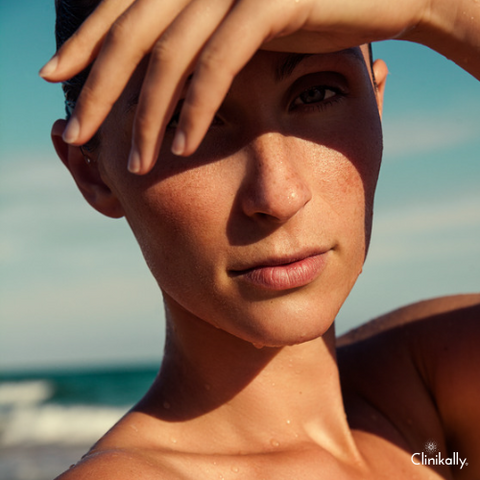
There are several factors to consider when selecting a sunscreen in order to make an informed decision. Here are some guidelines to assist you in selecting the best sunscreen for your needs:
-
Look for broad-spectrum protection: Select a sunscreen that protects against both UVA and UVB rays. This will help to prevent sunburn, skin ageing, and skin cancer.
-
Check the SPF: Choose a sunscreen with a minimum sun protection factor (SPF) of 30. This is the bare minimum recommended by the American Academy of Dermatology.
-
Consider your skin type: If you have oily or acne-prone skin, look for a lightweight, oil-free formula. Choose a moisturising formula that will hydrate your skin if you have dry skin.
-
Choose a water-resistant formula: If you intend to be in the water or sweat heavily, select a water-resistant formula that will last longer on your skin.
-
Look for mineral-based sunscreens: Mineral-based sunscreens physically block the sun's rays with ingredients such as zinc oxide and titanium dioxide. They are widely regarded as safe for both humans and the environment.
-
Avoid the following chemical ingredients: Two chemical components, oxybenzone and octinoxate, have been associated with harm to coral reefs. Look for sunscreens devoid of these components.
-
Check the expiration date: Because sunscreen loses effectiveness over time, always check the expiration date before using it.
By taking these factors into account, you can select a sunscreen that provides effective sun protection while also being gentle on your skin and the environment.
Factors to Consider When Choosing Sunscreen
There are several factors to consider when selecting a sunscreen to ensure you get the right product for your needs:
-
SPF: Look for a sunscreen with an SPF of at least 30, which will protect you from both UVA and UVB rays.
-
Broad-spectrum protection: Use a sunscreen with broad-spectrum protection to shield yourself from both UVA and UVB rays.
-
Skin type: When choosing a sunscreen, keep your skin type in mind. If you have oily or acne-prone skin, look for a lightweight, oil-free formula. Choose a moisturising formula that will hydrate your skin if you have dry skin.
-
Water-resistant: If you plan to swim or sweat a lot, choose a sunscreen that is water-resistant and will stay on your skin longer.
-
Chemical vs. mineral: Consider whether you prefer chemical or mineral sunscreen. Mineral sunscreens physically block UV rays, whereas chemical sunscreens absorb them. Mineral sunscreens are frequently recommended for people who have sensitive skin.
-
Ingredients: Read the ingredient list carefully to avoid potential allergens or irritants. Avoid using fragrances and alcohol if you have sensitive skin.
-
Application: Take the application procedure for instance. You should select the type of sunscreen that is most convenient for you from those that are available as sprays, lotions, or sticks.
-
Date of expiration: Verify the sunscreen's expiration date to see if it is still functional.
You can choose a sunscreen that will offer efficient sun protection while being safe for your skin and your way of life by taking into account these factors.
Finding the Right Sunscreen for Your Skin and Lifestyle
It can be difficult to choose the best sunscreen for your skin and way of life. The following advice will help you select the ideal sunscreen for your requirements:
-
Determine your skin type: Pick an oil-free, lightweight formula if your skin is oily or prone to acne. Choose a moisturising formula that will hydrate your skin if you have dry skin. For sensitive skin, choose a mineral-based sunscreen.
-
Look for broad-spectrum protection: To shield yourself from UVA and UVB rays, go with a sunscreen that offers broad-spectrum protection.
-
Choose the right SPF: Look for a sunscreen with an SPF of at least 30, which will provide adequate protection against UVA and UVB rays. If you spend a lot of time outside, consider using a higher SPF.
-
Water-resistant: If you plan to swim or sweat a lot, choose a sunscreen that is water-resistant and will stay on your skin longer.
-
Choose the right formulation: Sunscreens come in a variety of forms, including lotions, sprays, gels, and sticks. Choose the one that is easiest and most comfortable for you to use.
-
Examine the ingredient list: Any potential allergens or irritants should be avoided. Avoid using fragrances and alcohol if you have sensitive skin.
-
Examine the expiration date: Check that the sunscreen is not expired and is still effective.
-
Consider your lifestyle: If you are an athlete, choose a formula that is water-resistant and sweat-proof. If you have children, choose a formula that is gentle on their skin.
You can find a sunscreen that is both effective and comfortable for your skin and lifestyle by taking these factors into account. Remember to apply sunscreen liberally and on a regular basis, especially when spending time outside.



